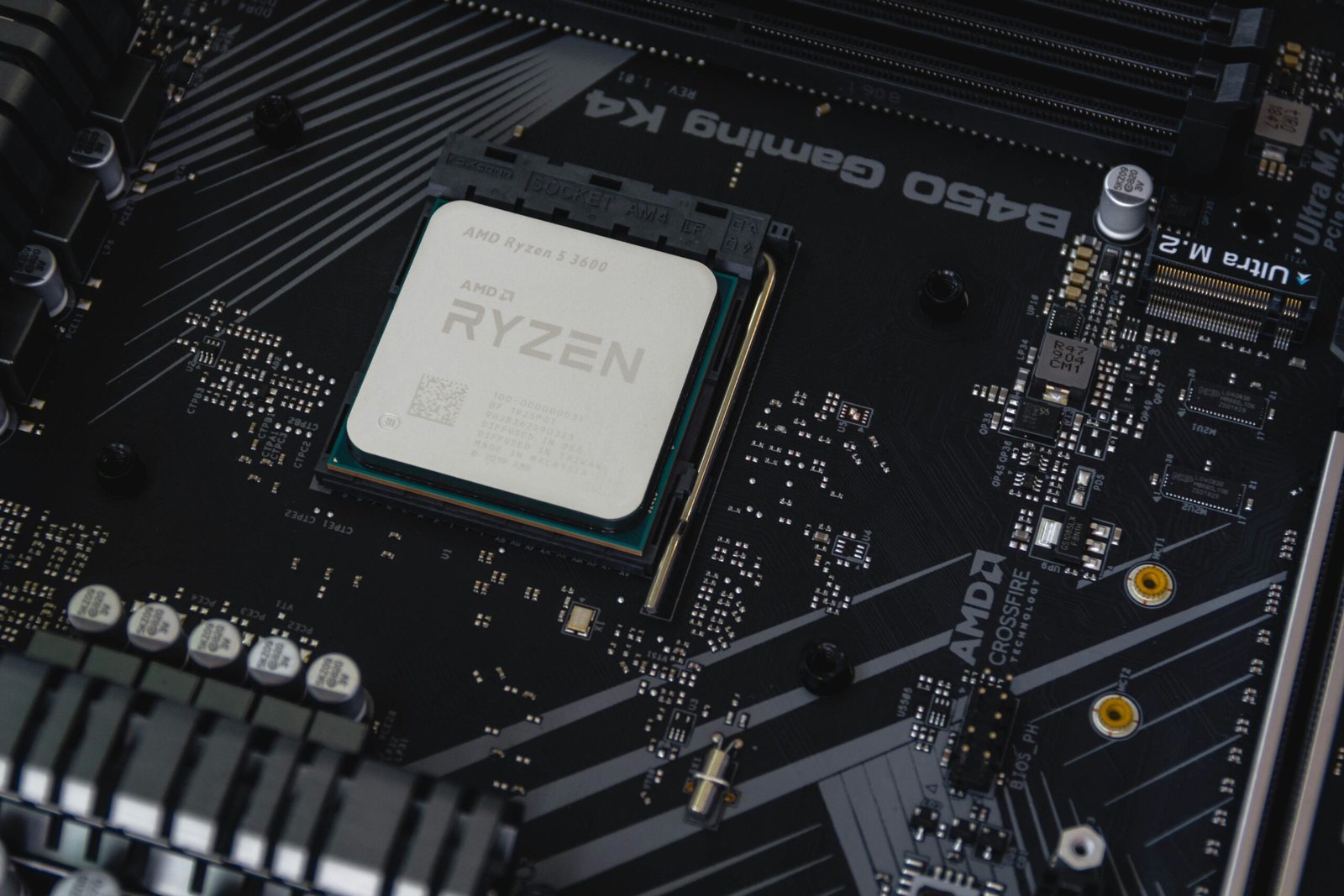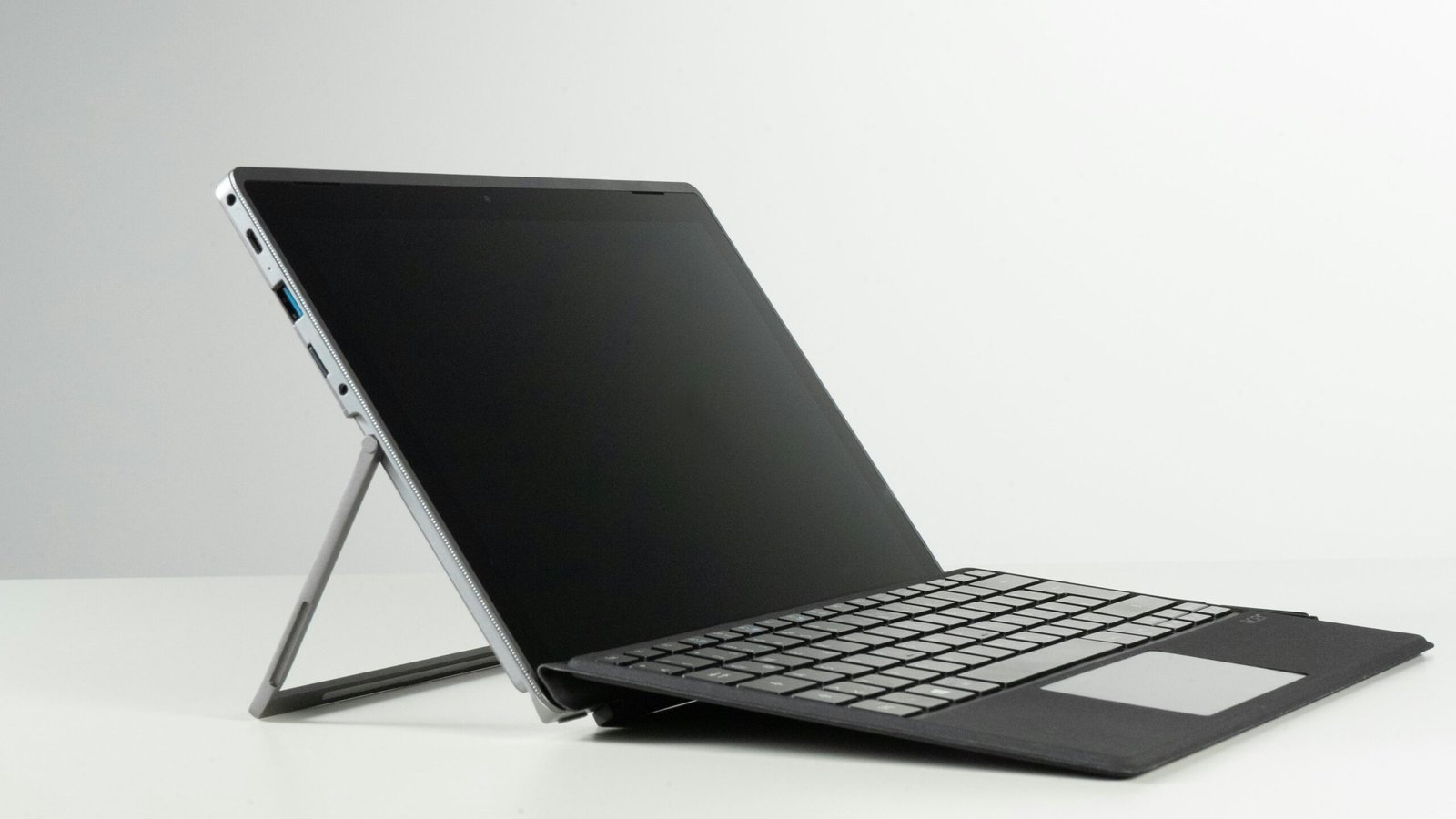Introduction to AMD’s Processor Line
Advanced Micro Devices (AMD) stands as a prominent player in the global CPU market, known for its relentless innovations and advancements in desktop and laptop processors. Founded in 1969, AMD has grown from a small semiconductor company to a key competitor against industry giants, particularly in the realm of high-performance computing. Over the last few decades, AMD has developed a strong reputation for delivering powerful and efficient processors that cater to both consumers and professionals alike.
The evolution of AMD processors is marked by significant milestones, beginning with the introduction of the AMD 2900 series in the early 1980s. Throughout the years, AMD has continually refined its technology, launching the Athlon and Phenom lines in the late 1990s and early 2000s, which positioned their offerings as formidable alternatives to Intel’s CPUs. The introduction of the Ryzen series in 2017 marked a turning point, showcasing AMD’s commitment to performance, energy efficiency, and multi-core processing capabilities. This resurgence has garnered considerable attention, not just from gaming enthusiasts but also from professionals looking for reliable computing solutions.
AMD processors have gained substantial traction in various sectors, including gaming, content creation, and data-driven applications. The company’s focus on integrating advanced technologies such as Zen architecture and Infinity Fabric has enabled the development of processors that outperform previous generations of AMD and Intel offerings. As we look ahead to the upcoming processor release, there is heightened anticipation surrounding AMD’s latest innovations, which promise to further enhance computing experiences for users across multiple platforms.
Overview of the Upcoming AMD Processor
The forthcoming AMD processor, codenamed “Zenith,” is set to redefine performance benchmarks in the PC and desktop computing realms. This new architecture builds upon the established success of its predecessors while introducing significant enhancements aimed at both gamers and professionals alike. As AMD continues to innovate, this processor promises to deliver exceptional performance, efficiency, and responsiveness across various computing tasks.
The “Zenith” architecture leverages cutting-edge manufacturing technology, incorporating advanced features designed to optimize processing power and thermal management. This results in a remarkable balance between high clock speeds and energy efficiency, appealing to a wide array of users, from high-end gamers seeking superior frame rates to professionals requiring reliable multitasking capabilities for demanding applications. By focusing on these diverse target audiences, AMD aims to cater to the needs of users who expect top-tier performance from their desktop computers.
One of the standout features of the upcoming processor is its support for DDR5 memory and PCIe 5.0 technology. These advancements not only enhance the overall data transfer speeds but also allow for improved bandwidth when paired with next-generation graphics cards—ideal for gamers who wish to achieve optimal gaming experiences. Additionally, for content creators and professionals, the incremental gains in productivity and performance will streamline workflows, enabling more complex tasks to be completed with ease.
What sets the “Zenith” processor apart from competitors in the market is its unwavering commitment to power efficiency and thermal optimization at every processing thread. These aspects are crucial not only for gaming setups but also for workstation environments where reliability and performance are non-negotiable. As AMD gears up for this processor launch, the industry keenly anticipates how “Zenith” will shape the future of computing.
Key Features and Specifications
The upcoming AMD processor is generating considerable anticipation within the PC and desktop computer communities. One of the standout specifications of this new processor is its impressive core count, which significantly enhances its multitasking capabilities. This architecture is designed to support a higher number of simultaneous tasks, making it a compelling choice for power users and gamers alike.
In addition to the formidable core count, the thread count has also been optimized to improve performance further. With a higher thread count, users can expect better handling of parallel workloads, which is particularly beneficial for content creation and demanding applications. This is a crucial feature for those looking to build a high-performance desktop that can tackle both gaming and productivity tasks with ease.
Clock speed is another important metric to consider. AMD’s latest processor boasts a higher base and boost clock speed compared to its predecessors, which means users can anticipate faster response times and improved overall efficiency. Coupled with advanced thermal management technologies, this enhanced clock performance is designed to maintain stability under load, ensuring that users enjoy a smooth experience during intensive computational tasks.
Moreover, the processor’s cache size plays a pivotal role in its performance. With expanded cache capabilities, it allows for quicker data access, facilitating improved processing speed. This is particularly important in scenarios that demand rapid data retrieval, such as gaming or complex simulations.
Innovative features also define this upcoming AMD processor, such as integrated graphics enhancements and improvements in power efficiency. With these advancements, users can expect not only robust computational power but also reduced energy consumption, making it a viable option for those looking to minimize their environmental impact while enjoying top-tier performance in their desktop computers.
Performance Expectations
The anticipation surrounding the upcoming AMD processor launch has generated significant interest within the computing community. Based on the specifications and benchmarks that AMD has released, industry analysts expect considerable performance improvements over previous generations. With each new iteration, AMD seeks to enhance both computational power and energy efficiency, making its processors more appealing for users across various applications.
The forthcoming AMD processors are expected to feature advanced architectures that focus on optimizing processing speeds while maintaining lower power consumption. For instance, the transition to more refined fabrication processes, such as smaller nanometer designs, suggests that these chips will deliver higher performance capabilities without generating excessive heat. This efficiency is critical, particularly for desktop computers where thermal management is a fundamental consideration.
Benchmark comparisons show that AMD’s latest chips are likely to outperform competitors in multiple performance metrics. Early tests indicate that the new processor could offer significant gains in multitasking and productivity-based applications, catering to professionals who require robust performance for graphic design, content creation, and software development. In gaming scenarios, the expected improvements in frame rates and lower latency should resonate with the gaming community, amplifying the appeal of the respective desktop PC builds that incorporate these processors.
Additionally, competitive pricing models may further drive users to consider AMD processors over alternatives. Retaining the value-for-money proposition could broaden the market share, especially among budget-conscious gamers and users who are assembling their own computers. As users await performance benchmarks closer to the launch date, the consensus remains optimistic regarding the AMD processor’s potential to significantly elevate the computing experience.
Compatibility and Upgrades
As AMD prepares to launch its latest processor, a critical consideration for both current AMD users and potential buyers is the compatibility of this new technology with existing hardware. Understanding whether the new processor will fit seamlessly into current desktop configurations can significantly impact user decision-making regarding upgrades.
The latest AMD processors are typically designed to be compatible with a range of motherboards and chipsets; however, it is crucial to verify whether your existing setup supports the new technology. The launch of the new processor may introduce advanced features that older chipsets may not fully utilize. Therefore, users with older motherboards may need to evaluate whether an upgrade to a compatible motherboard is necessary to reap the full benefits of the new processor.
Additionally, users who have invested in high-performance cooling solutions for their current AMD processors should consider whether these will be compatible with the new architecture. The thermal design and power requirements of the new CPUs may differ from previous models, necessitating adjustments or enhancements to prevent overheating while maintaining peak performance.
For those who are already invested in the AMD ecosystem, upgrading to the new processor could be a straightforward process, provided that their existing hardware meets compatibility requirements. Those considering a complete overhaul of their PC may wish to evaluate the overall performance improvements offered by the newer processor and assess whether other components, such as RAM and power supply, are aligned with these advancements.
In conclusion, while many current AMD users may find upgrading to the latest processor achievable, clear attention must be paid to motherboard compatibility, chipset specifications, and the adequacy of cooling solutions to ensure a successful transition to the new architecture.
Release Date and Pricing
The anticipation surrounding AMD’s upcoming processor launch has reached a fever pitch in the technology community. AMD is expected to introduce this new line of processors in the first quarter of 2024, with a specific release date rumored to be in late February. This timeline aligns with previous product launches by the company, which are strategically scheduled to coincide with key technology expos and industry events. Enthusiasts and PC builders alike are eager to see how this new generation of processors will elevate performance standards within the desktop computer market.
As for pricing, AMD is expected to adopt a competitive strategy that aims to offer high performance without prohibitive costs. Historically, AMD has positioned its products favorably against competitors like Intel, making them an attractive option for consumers searching for both value and performance in their desktop systems. The new CPUs are likely to be priced similarly to existing models, but with improvements in efficiency and processing power that should justify any slight increase in cost. Analysts expect entry-level options to start around $200, while high-performance variants could reach up to $700. This pricing strategy is anticipated to entice not only gamers but also professionals who rely on advanced computing capabilities for demanding applications.
In comparison, competitors tend to price their processors at a premium, often providing less favorable specifications at higher costs. By ensuring that their new CPU lineup offers compelling performance at reasonable price points, AMD is poised to strengthen its position in the desktop processor market. Consumers can expect excellent value for their investment, with enhancements that may include elevated clock speeds and improved thermal performance, thereby fostering a more efficient computing experience in newly built PCs.
Influence on the Gaming and Creative Communities
As AMD prepares to launch its latest processor, the impact on the gaming and creative communities is expected to be significant. Gamers, whose experiences heavily rely on the performance of their rigs, will likely notice substantial enhancements in performance, allowing for smoother gameplay and higher frame rates. The anticipated processor is designed to optimize PC resource allocation, ensuring that demanding games can run efficiently without any noticeable lag. This improvement not only caters to the avid gamers but also enhances multiplayer experiences where split-second decisions can dictate outcomes.
In addition, the new AMD processor is poised to benefit content creators who require powerful computing capabilities for streaming and rendering. As high-definition video becomes the standard, tasks such as editing large files and executing complex effects will become much more streamlined with the advanced architecture of the upcoming processor. The integration of multiple cores and threads will enable these users to multitask effectively, running demanding applications side by side without sacrificing performance. This is particularly vital in today’s content-creating landscape, where high-quality production values are essential for audience engagement.
Furthermore, AMD’s commitment to enhancing their offerings also extends to the realm of gaming graphics. With improved processing speeds, gamers can expect enhanced visual fidelity, making environments more immersive and aesthetically pleasing. Creative professionals, whether they work in video editing, graphic design, or 3D modeling, will also witness improved rendering times and efficiency, allowing them to bring their ideas to life with greater speed and precision.
Overall, the forthcoming AMD processor is set to bring transformative changes to both gaming and creative professions. As these communities continue to push the boundaries of technology, the advancements in AMD’s processors will undoubtedly serve as a key pillar supporting these innovations.
Excited Community Reactions
The anticipation surrounding AMD’s upcoming processor launch has generated significant enthusiasm within the tech community. Bloggers, reviewers, and industry experts have been actively discussing the potential capabilities and impacts of the new AMD processor on desktop computers and PCs alike. Enthusiastic discussions have emerged across various social media platforms and tech forums, revealing a broad spectrum of excitement from consumers to professionals.
Many tech enthusiasts express eagerness over the promising specifications of the new AMD processor. Reviews highlight how this forthcoming release could potentially redefine performance benchmarks in the desktop computing segment. Notable excitement surrounds its expected compatibility with various PC architectures, with statements from users anticipating considerable improvements in multitasking and gaming performance. A common sentiment echoed on platforms like Twitter and Reddit is that this processor could be a game-changer, especially among gamers and content creators who demand high performance from their machines.
Discussion threads filled with speculation about benchmarks and potential pricing further amplify the anticipation. Influential figures within the community, including tech YouTubers and podcasters, have begun to dedicate segments on their platforms to dissect the possible implications of the AMD processor. Some users are discussing how this launch may challenge current competitors in the market, with some forum posts hinting at transformative advancements in compute power that could redefine gaming and productivity standards on PCs. Moreover, the potential for improved efficiency could resonate well with professionals who rely on robust computing capabilities for demanding applications.
As the launch date approaches, the fervor surrounding this processor continues to build, and it underlines the critical role that AMD plays in the technology sector. The conversations across online platforms also indicate a collective curiosity about what this new CPU will bring to the desktop environment, setting a high bar for innovation and performance in the computing landscape.
Conclusion: Looking Forward
The imminent launch of AMD’s new processor represents a pivotal moment in the landscape of computing technology. As AMD continues to innovate, consumers can anticipate a remarkable leap in performance and efficiency. This upcoming desktop processor is poised to cater to the diverse needs of users ranging from gaming enthusiasts to professionals engaged in demanding computational tasks. The enhancements in architecture and processing power, coupled with advancements in energy efficiency, highlight AMD’s commitment to pushing the boundaries of what personal computers can achieve.
With each new processor generation, AMD redefines the standards of computing, and this latest release is expected to set a new benchmark. For individuals looking to upgrade their PCs, the significance of these forthcoming developments cannot be overstated. The impact on productivity, leisure, and overall performance in daily computing tasks will be substantial. Furthermore, as the competition continues to evolve, the market dynamics will inevitably shift, giving rise to new opportunities for consumers to benefit from advanced technology.
As we await further announcements surrounding the exact launch date and specifications, it is advisable for tech enthusiasts and potential buyers to stay informed. Understanding how these processors will integrate into systems—both in terms of compatibility and performance—will be crucial for making educated decisions in future technology purchases. The anticipation surrounding AMD’s new processor serves as a reminder of the rapid advancements occurring in the computer industry. Engaging with reputable sources for the latest updates will ensure consumers are well-prepared to take advantage of AMD’s innovative offerings as they become available.





